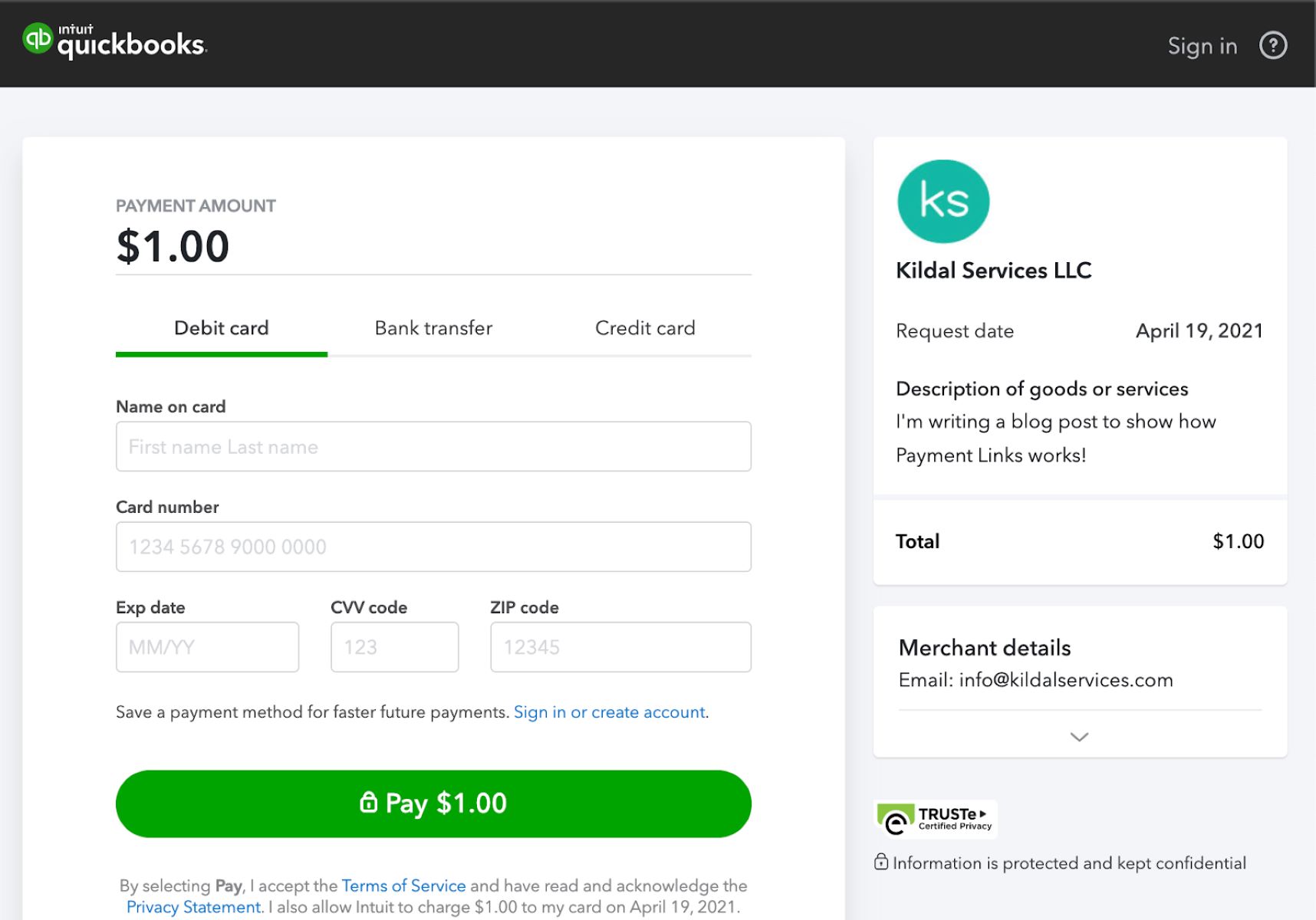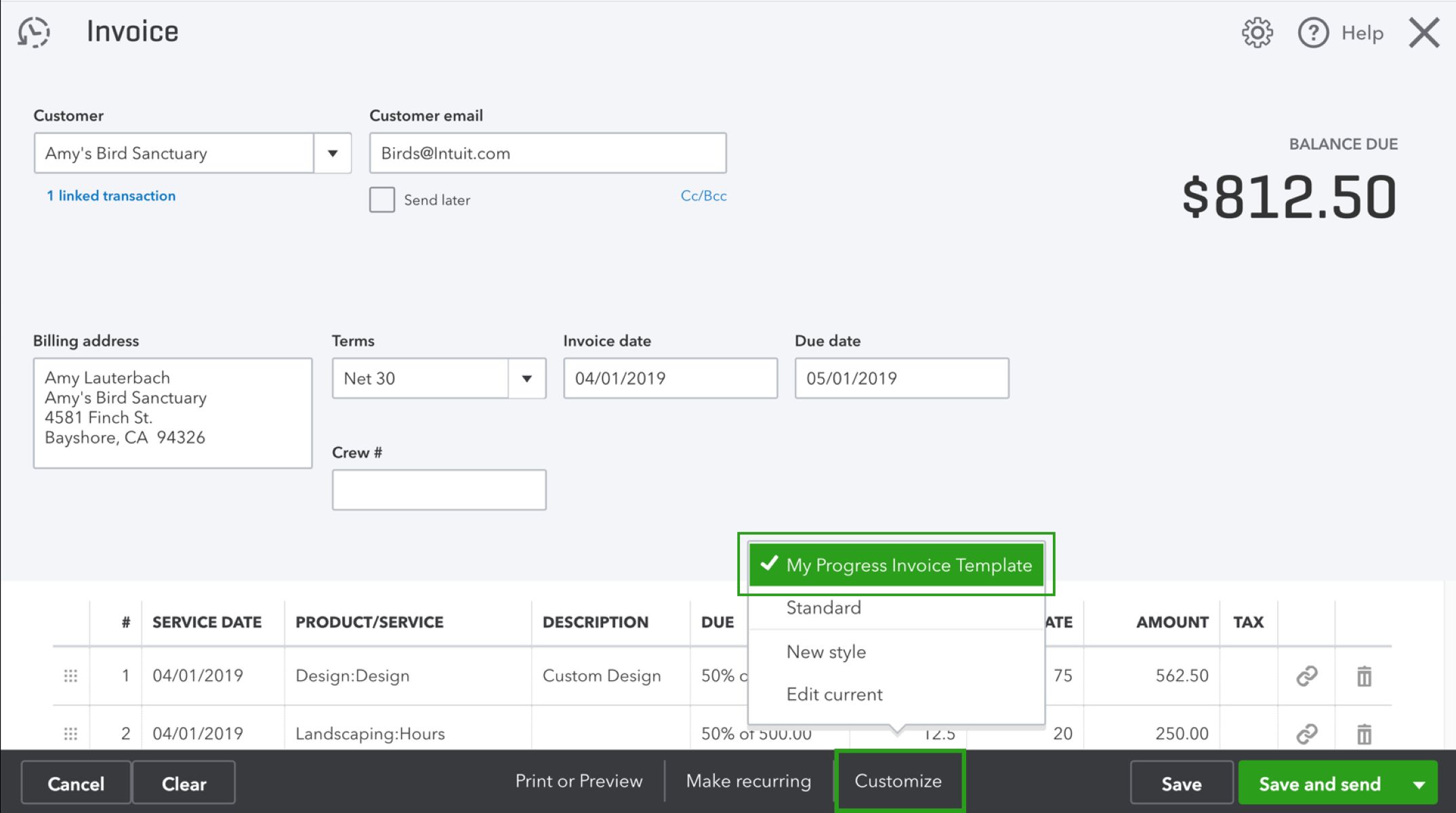Introduction
Welcome to our guide on how to link your credit card to QuickBooks, the popular accounting software used by businesses worldwide. QuickBooks allows you to seamlessly track and manage your financial transactions, including credit card expenses, to ensure accurate bookkeeping and efficient financial management. By linking your credit card to QuickBooks, you can easily import and categorize your credit card transactions, reconcile statements, and gain valuable insights into your business expenditures.
Setting up the link between your credit card and QuickBooks is a straightforward process that can save you time and effort in manually entering transactions. In this guide, we will walk you through the step-by-step process of linking your credit card account and managing your credit card transactions within QuickBooks.
Whether you’re a small business owner, self-employed professional, or bookkeeper responsible for managing finances, this guide will provide you with the knowledge and tools to streamline your credit card management process and ensure accurate financial records.
Before we dive into the steps, it’s important to note that the process of linking credit cards to QuickBooks may vary slightly depending on the version of QuickBooks you are using. However, the underlying principles and steps remain the same.
Now, let’s get started with Step 1: Gather Required Information.
Step 1: Gather Required Information
Before you can link your credit card to QuickBooks, you’ll need to gather some essential information about your credit card account. Having this information readily available will make the setup process smoother and more efficient. Here are the key details you’ll need:
- Credit card provider: Determine the name of the financial institution or credit card company that issued your credit card.
- Credit card account number: Find your credit card account number, which is typically located on the front of your card. Ensure you have the correct and up-to-date account number to avoid any setup issues.
- Credit card statement: Retrieve a recent credit card statement. This will help you reconcile transactions in QuickBooks and provide accurate financial records.
- Online banking credentials: If you plan to link your credit card through online banking, gather the login credentials for your online banking account associated with your credit card. This information will be used to establish a secure connection between QuickBooks and your financial institution.
Once you have gathered all the required information, you will be ready to move on to Step 2: Set Up a New Account in QuickBooks.
Remember, it’s crucial to keep this information safe and secure. Treat your credit card details with utmost confidentiality to protect your financial information and avoid any potential security breaches.
With the necessary information at hand, you can now proceed to link your credit card account to QuickBooks and take advantage of its powerful financial management features.
Step 2: Set Up a New Account in QuickBooks
Now that you have gathered the required information, it’s time to set up a new account in QuickBooks for your credit card. Follow these steps to create a new account:
- Launch QuickBooks: Open your QuickBooks software on your computer or access it through the online version.
- Navigate to Chart of Accounts: In QuickBooks, go to the “Company” menu and select “Chart of Accounts.” This is where you manage all your financial accounts.
- Create a New Account: In the Chart of Accounts window, click on the “New” button to create a new account.
- Select Account Type: Choose “Credit Card” as the account type from the options provided. This ensures that your transactions are categorized properly.
- Enter Account Details: Enter the relevant information for your credit card account, including the account name (e.g., Visa, Mastercard), account number, and other details as required.
- Save the Account: Once you have entered the account details, click on the “Save” or “Save and Close” button to save the new account in QuickBooks.
Now that you have set up a new credit card account in QuickBooks, it’s time to move on to the next step: linking your credit card account to QuickBooks.
By creating a separate account for your credit card, you can effectively manage and track your credit card transactions without mixing them up with other financial accounts. This segregation allows for accurate financial reporting and analysis, helping you make informed decisions for your business.
With your new account set up, you’re one step closer to seamlessly managing your credit card transactions within QuickBooks.
Step 3: Link Credit Card Account
Now that you have set up a new credit card account in QuickBooks, it’s time to link your actual credit card account to QuickBooks. This will allow you to import your credit card transactions directly into the software. Follow these steps to link your credit card account:
- Access Banking Menu: In QuickBooks, navigate to the “Banking” menu and select “Bank Feeds” or “Online Banking.”
- Select Add Account: Click on the “Add Account” or “Link Account” button to initiate the account linking process.
- Search for Your Financial Institution: Enter the name of your credit card provider or financial institution in the search bar. QuickBooks will display a list of matching options.
- Select Your Institution: Choose the appropriate financial institution from the search results to proceed to the next step.
- Login to Your Online Banking Account: You will be prompted to enter your online banking credentials (username and password) for your credit card account. This step establishes a secure connection between QuickBooks and your financial institution.
- Authorize the Link: Follow the on-screen prompts to authorize the link between QuickBooks and your credit card account. This may involve confirming your identity or completing any additional security measures required by your financial institution.
Once you have completed these steps, QuickBooks will establish a connection with your credit card account, and you will be able to import your credit card transactions directly into the software.
It’s worth noting that depending on your financial institution, there may be additional steps or authentication processes required. QuickBooks will guide you through the specific requirements to ensure a successful link between your credit card account and QuickBooks.
The ability to link your credit card account to QuickBooks provides various benefits, including eliminating manual data entry, reducing errors, and saving time. With the link established, you can seamlessly import your credit card transactions into QuickBooks and easily keep track of your expenses.
Now that your credit card is linked to QuickBooks, you’re ready to move on to the next step: entering credit card transactions.
Step 4: Enter Credit Card Transactions
With your credit card account successfully linked to QuickBooks, it’s time to start entering your credit card transactions. This step is crucial for accurate financial record-keeping and expense tracking. Follow these steps to enter your credit card transactions:
- Access Banking Menu: In QuickBooks, go to the “Banking” menu and select “Bank Feeds” or “Online Banking.”
- Download Transactions: Look for the option to download your credit card transactions from your financial institution. QuickBooks will retrieve the most recent transactions and display them in a list.
- Categorize Transactions: Review the downloaded transactions and categorize them appropriately. QuickBooks provides categories such as “Advertising,” “Office Supplies,” and “Travel” to help you classify your expenses accurately. Assign the appropriate category to each transaction.
- Verify Transaction Details: Double-check the transaction details, such as the date, vendor name, and transaction amount, for accuracy. Ensure that the information matches the corresponding credit card statement for reconciliation purposes.
- Split Transactions (if necessary): If a transaction needs to be allocated to multiple expense categories, you can split the transaction and assign different amounts to each category. This is helpful for transactions involving multiple items or expenses.
- Save Transactions: Once you have reviewed and categorized the transactions, click on the “Save” or “Add” button to save each transaction in QuickBooks.
- Repeat the Process: Download and enter the remaining credit card transactions until all transactions are recorded in QuickBooks.
By diligently entering your credit card transactions in QuickBooks, you maintain accurate financial records and ensure that your business expenses are properly accounted for. This step also makes it easier to track and analyze your spending patterns, identify potential tax deductions, and keep an eye on your budget.
It is recommended to regularly enter your credit card transactions into QuickBooks to stay up to date with your financial data and maintain an accurate picture of your business’s financial health.
Now that you have entered your credit card transactions in QuickBooks, it’s time to move on to Step 5: reconciling your credit card statements.
Step 5: Reconcile Credit Card Statements
Reconciling your credit card statements in QuickBooks is an essential step to ensure that your financial records accurately reflect the transactions and balances on your credit card statement. Follow these steps to reconcile your credit card statements:
- Access Reconciliation: In QuickBooks, navigate to the “Banking” menu and select “Reconcile.”
- Select Credit Card Account: Choose the credit card account you want to reconcile from the drop-down list of accounts.
- Enter Statement Information: Enter the statement date, ending balance, and any fees or interest charges listed on your credit card statement.
- Compare Transactions: QuickBooks will display a list of transactions for the statement period. Compare these transactions with the transactions listed on your credit card statement, ensuring that they match in terms of date, amount, and vendor.
- Mark Transactions as Cleared: As you verify transactions on your credit card statement, mark them as cleared in QuickBooks by checking the box next to each transaction.
- Reconcile Discrepancies: If there are any discrepancies between the transactions in QuickBooks and those on your credit card statement, investigate and resolve them. This may involve locating missing transactions, correcting data entry errors, or contacting your credit card provider for clarification.
- Finish Reconciliation: Once you have reviewed and marked all transactions as cleared, ensure that the “Difference” amount on the reconciliation screen is zero. If so, click on the “Finish” button to complete the reconciliation process.
Reconciling your credit card statements in QuickBooks not only helps ensure the accuracy of your financial records but also provides insights into any discrepancies, such as missing transactions or unauthorized charges. It is an essential step in maintaining the integrity of your financial data and ensuring that your credit card expenses are properly recorded.
Remember to reconcile your credit card statements regularly, ideally on a monthly basis, to stay on top of your business’s financial transactions and maintain accurate records.
Now that you have successfully reconciled your credit card statements, let’s move on to the final step: monitoring and managing your credit card expenses.
Step 6: Monitor and Manage Credit Card Expenses
Once you have linked your credit card to QuickBooks, entered transactions, and reconciled your credit card statements, it’s important to monitor and manage your credit card expenses on an ongoing basis. This step ensures that you have a clear view of your business’s financial health and can make informed decisions. Follow these strategies to effectively monitor and manage your credit card expenses:
- Regularly Review Credit Card Transactions: Take the time to review your credit card transactions in QuickBooks on a regular basis. This allows you to identify any errors, discrepancies, or unauthorized charges promptly. It’s also an opportunity to spot any patterns or trends in your spending.
- Categorize Transactions Appropriately: Ensure that each credit card transaction is correctly categorized in QuickBooks. This helps with accurate financial reporting and analysis, allowing you to understand where your business’s money is going. Adjust the categories as needed, and create custom categories if required.
- Track and Monitor Credit Limit Utilization: Keep an eye on your credit card’s available credit limit and utilization. This helps you avoid overspending and manage your cash flow effectively. QuickBooks provides reports and tools to track your credit card balances and usage.
- Set Budgets and Spending Limits: Use QuickBooks’ budgeting feature to set monthly or quarterly spending limits for your credit card expenses. This allows you to track your spending against your set budget and helps control costs.
- Create Expense Reports: Utilize QuickBooks’ reporting capabilities to generate expense reports for your credit card transactions. These reports provide a comprehensive overview of your credit card expenses, making it easier to analyze spending patterns and identify areas for cost-saving.
- Set Up Alerts and Notifications: Take advantage of QuickBooks’ alert and notification settings to stay on top of your credit card expenses. Create reminders for due dates, receive alerts for unusual or high-value transactions, and stay informed about any changes in your credit card balances.
- Regularly Reconcile Statements: Maintain a consistent schedule for reconciling your credit card statements in QuickBooks. This ensures that your financial records are up to date, accurate, and in sync with your actual credit card activity.
By monitoring and managing your credit card expenses effectively in QuickBooks, you gain better control over your business’s financial well-being. It allows you to make informed decisions, identify areas for improvement, and optimize your spending for maximum profitability.
Remember, staying proactive in managing your credit card expenses helps you maintain financial stability and make informed decisions for the growth and success of your business.
Congratulations! You have successfully completed all the steps to link and manage your credit card in QuickBooks. By following these steps and utilizing the powerful features of QuickBooks, you are equipped to efficiently track your credit card transactions, streamline your financial management, and make informed financial decisions.
Conclusion
Linking your credit card to QuickBooks is a valuable step in streamlining your financial management, ensuring accurate record-keeping, and gaining better control over your business expenses. Throughout this guide, we have covered the essential steps to successfully link and manage your credit card in QuickBooks.
We began by gathering the required information, including details about your credit card account and online banking credentials. Next, we walked through the process of setting up a new account in QuickBooks specifically for your credit card transactions.
Then, we explored how to link your credit card account to QuickBooks, establishing a secure connection between your financial institution and the software. This allows for automated importing of credit card transactions, saving you time and reducing the likelihood of errors in manual data entry.
Once the link was established, we learned how to enter credit card transactions in QuickBooks, categorizing them accurately and helping maintain a clear overview of your business expenses.
We then moved on to reconciling your credit card statements with QuickBooks, ensuring that your financial records align with your credit card statements and providing a clear understanding of your financial position.
Finally, we discussed the importance of monitoring and managing your credit card expenses. By regularly reviewing transactions, categorizing them appropriately, and utilizing budgeting and reporting features in QuickBooks, you can stay on top of your spending and make informed financial decisions.
By following these steps and utilizing the powerful tools and features of QuickBooks, you are well-equipped to efficiently manage your credit card transactions, maintain accurate financial records, and gain insights into your business’s financial health.
Remember to stay proactive in monitoring your credit card expenses, regularly reconcile your statements, and make use of the various features and reports available in QuickBooks to optimize your financial management.
Congratulations on successfully linking and managing your credit card in QuickBooks! By implementing these practices, you are taking an important step towards efficient financial management for the growth and success of your business.

























